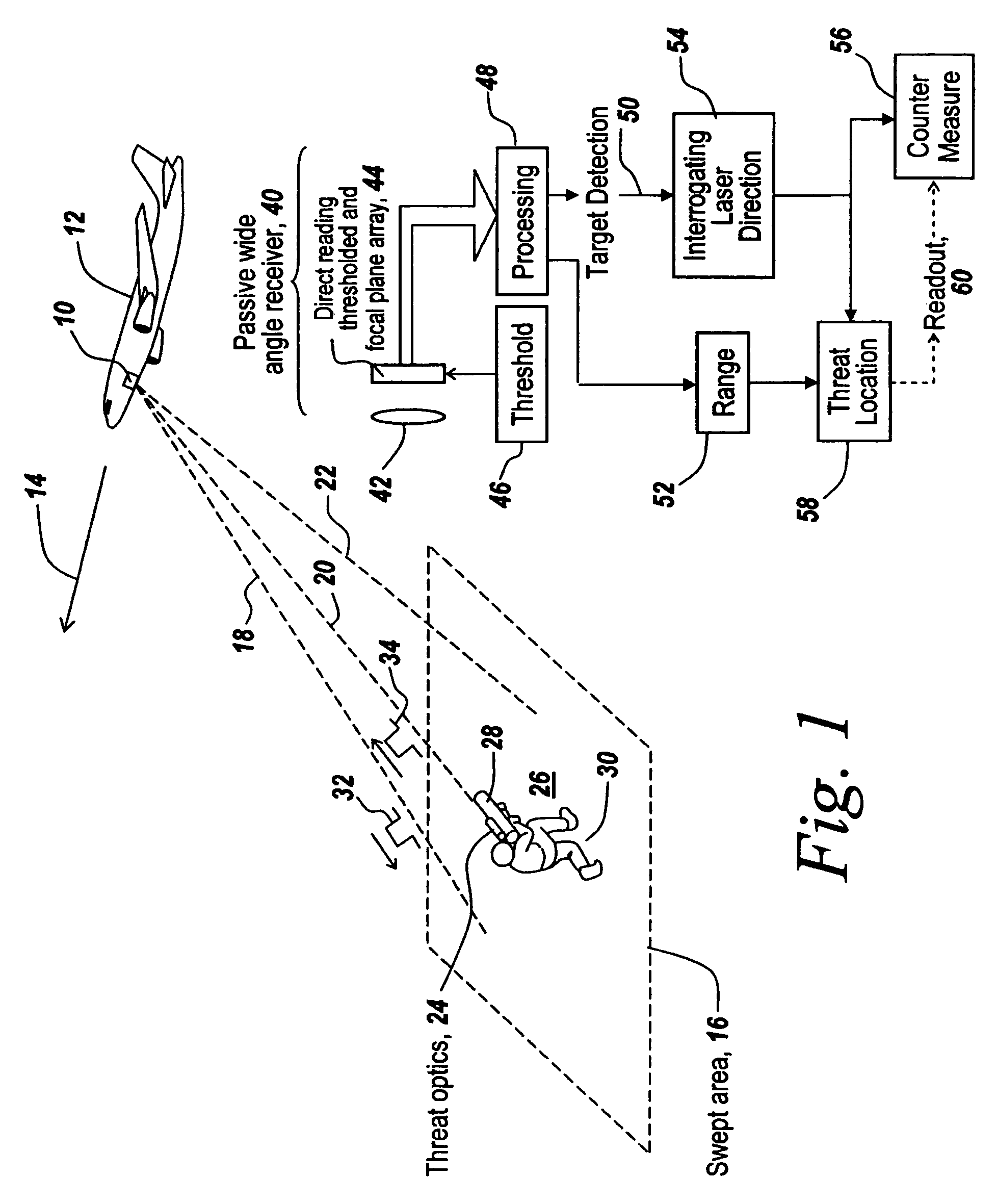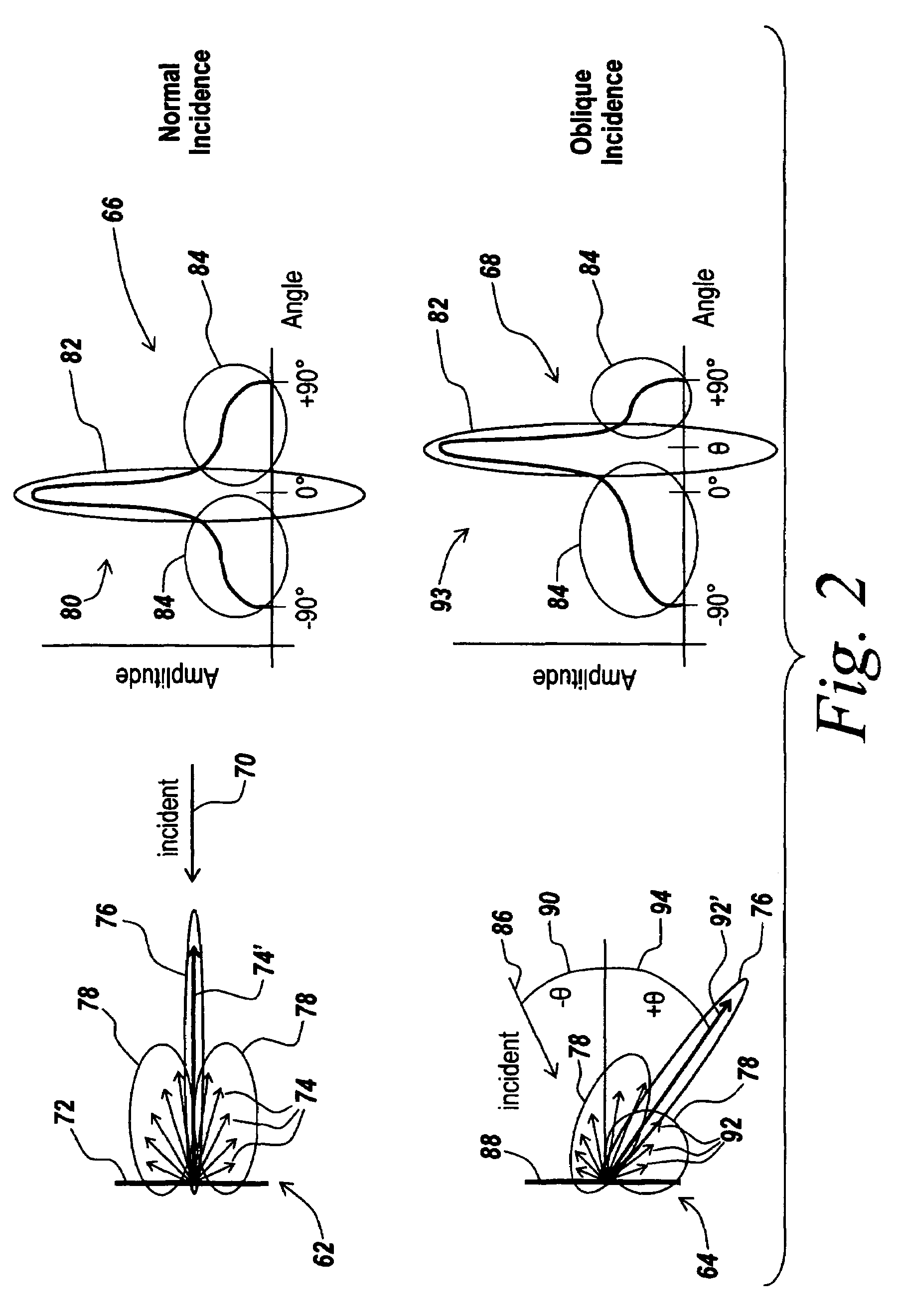Active search sensor and a method of detection using non-specular reflections
a technology of active search sensor and non-speculative reflection, which is applied in the field of active laser search system, can solve the problems of large number of laser sweeps that cannot detect targets, system problems, and at best problems such as retroreflection search, and achieve the effect of avoiding the detection of target objects by large number of laser sweeps
- Summary
- Abstract
- Description
- Claims
- Application Information
AI Technical Summary
Benefits of technology
Problems solved by technology
Method used
Image
Examples
Embodiment Construction
[0045]Referring now to FIG. 1, an aircraft 12 flying in the direction indicated by arrow 14 and possessing an active search system 10 is shown. In this active system narrow laser pulses are projected in a scanned pattern along the directions 18, 20 and 22 over an area 16 to be searched. Here the narrow laser pulses that illuminate area 16 are denoted by reference character 32. It is the purpose of these scanned laser pulses to sweep area 16 in a reasonable time so that one can detect the presence of the optics 24 that accompany a threat ordnance 28 located at 26.
[0046]The threat is considered to have threat optics if, for instance, a lens is involved and there is something behind the lens at its focal plane. This could be, night vision goggles worn by an individual 30, or it could be any kind of telescopic sight used for aiming and or firing ordnance 28 at aircraft 12.
[0047]It is the purpose of system 10 to project a narrow pulse 32 towards area 16 and to detect return pulses 34 tha...
PUM
| Property | Measurement | Unit |
|---|---|---|
| length | aaaaa | aaaaa |
| length | aaaaa | aaaaa |
| pulse width | aaaaa | aaaaa |
Abstract
Description
Claims
Application Information
 Login to View More
Login to View More - R&D
- Intellectual Property
- Life Sciences
- Materials
- Tech Scout
- Unparalleled Data Quality
- Higher Quality Content
- 60% Fewer Hallucinations
Browse by: Latest US Patents, China's latest patents, Technical Efficacy Thesaurus, Application Domain, Technology Topic, Popular Technical Reports.
© 2025 PatSnap. All rights reserved.Legal|Privacy policy|Modern Slavery Act Transparency Statement|Sitemap|About US| Contact US: help@patsnap.com



